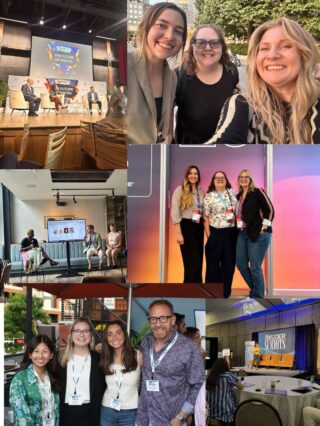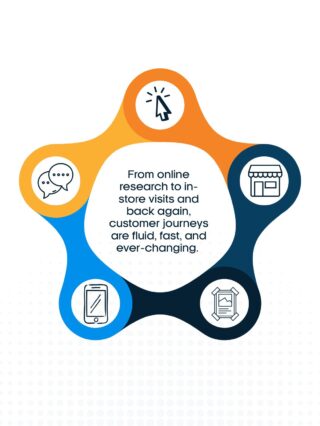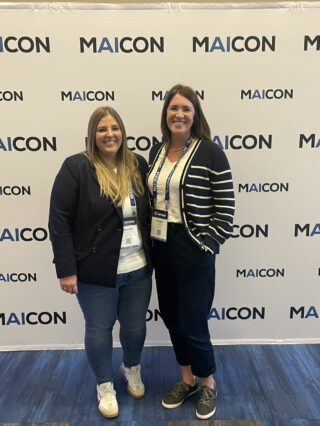At Butler/Till, we’ve been on the move—attending key industry events to stay ahead of the latest trends shaping the future of healthcare marketing. From Deep Intent Ad Lab to Reuters Pharma USA and PlayFronts, here are the essential takeaways we learned, that you need to know!
Deep Intent Ad Lab
Balancing AI Innovation with Patient Readiness
As AI continues to evolve in healthcare marketing, it enables brands to identify potential patients closer to the moment of diagnosis. However, just because we can reach patients at that moment doesn’t mean we should. Diagnoses can be life-changing—sometimes shocking or even devastating. A patient-first approach means leveraging AI responsibly, ensuring outreach is both ethical and supportive rather than purely opportunistic.
Healthcare’s AI Adoption is Keeping Pace
Historically, the healthcare and pharmaceutical industries have been slow to adopt emerging technologies, but that’s no longer the case. AI is leveling the playing field, allowing healthcare brands to innovate at the same speed as other industries. The focus isn’t on playing catch-up anymore—it’s on optimizing AI for healthcare’s unique needs.
The Power of AI-Driven Personalization
Both patients and healthcare providers (HCPs) value direct-to-consumer (DTC) media, especially as new brands, clinical trials, and scientific breakthroughs emerge at an unprecedented rate. HCPs can’t possibly keep up with every advancement in their field, which makes the role of an informed, engaged patient even more critical. AI-driven personalization helps deliver credible, relevant content, fostering more productive discussions between patients and providers.
Contributors: Nicole Hamlin
Reuters Pharma USA
Personalization is the Future—For Both HCPs and Patients
The best marketing doesn’t just push information, it guides audiences through a journey. One of the most compelling insights from Reuters Pharma was the concept of microjourneys—breaking down educational content into digestible “episodes,” similar to how Netflix structures its content. Whether targeting HCPs or patients, brands should deliver information in structured, engaging themes rather than overwhelming their audiences with a single, dense message.
Omnichannel is a Must-Have, not a Nice-to-Have
Today’s audiences consume content across multiple platforms, and pharma marketers need to meet them where they are. That means an omnichannel approach that ensures messaging is consistent yet tailored to different formats, whether that’s video, infographics, paid ads, or other mediums. A one-size-fits-all approach is no longer effective; personalization is key.
AI: Overhyped or Game-Changer?
AI continues to dominate industry conversations, but the key takeaway is clear: Technology is a tool, not a strategy. While AI can accelerate product development, streamline patient support programs, and enhance the feedback loop, it cannot replace a well-thought-out strategy. In fact, applying AI to a weak strategy can have the opposite effect—scaling inefficiencies rather than improving outcomes. Brands must ensure they have a strong foundation before leveraging AI to optimize their efforts.
Contributors: Patrick Cronin
IAB PlayFronts
Gaming is Now a Core Media Channel
Gaming has become a dominant force in the media landscape. Two out of three people under 40 play video games, and for Gen Z, gaming is actually more popular than watching TV. This shift in attention means advertisers need to rethink their media mix, meaning if gaming isn’t included, they’re missing out on a massive, engaged audience.
Traditional Ads Won’t Work in Gaming
Simply repurposing traditional ad formats isn’t enough. Gamers expect interactive, immersive experiences. Brands that embrace playable ads and branded mini games see significantly better engagement. Some campaigns that embrace this format show 6-10x higher click-through rates than standard digital ads.
The Rise of User-Generated Content (UGC) in Gaming
Platforms like Roblox, Fortnite, and Minecraft thrive on user-generated content, making influencer-led marketing a major opportunity for brands. Instead of inserting static logos into gaming environments, brands must find ways to integrate authentically—whether through creator partnerships, in-game activations, or community-driven content.
Smarter Targeting and Measurement Are Here
New measurement innovations are making gaming advertising more precise. First-party data strategies are critical as privacy regulations evolve, and gaming platforms now offer audience segmentation based on gameplay behaviors, preferences, and in-game actions. The result? Advertisers can now measure gaming campaign effectiveness in the same way they track social and CTV.
Contributors: Andrew McClelland
Key takeaway? There is Shift from Passive to Active Media
Across all these events, one key theme stands out: Passive media consumption is declining. Whether it’s AI-driven personalization in healthcare or interactive engagement in gaming, the future of advertising is about active, immersive experiences. Brands that embrace this shift—prioritizing meaningful engagement over impressions—will be the ones that win.




